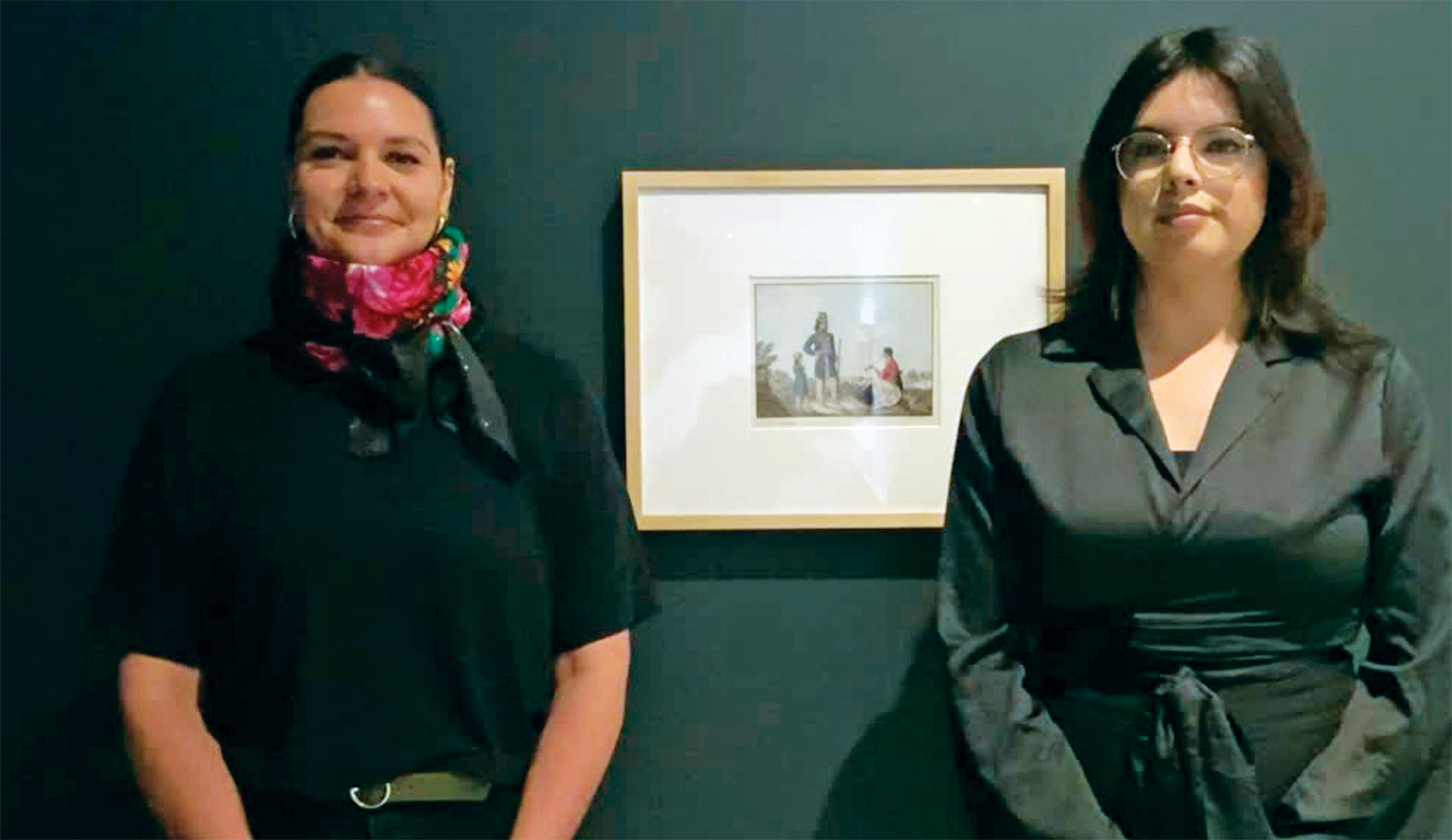Renaming Artworks — How Changing Titles Helps Change Institutions
Matias Bessai
In 2022, the conversation on dealing with problematic titles and names is moving to centre stage in different scales across the country. Those sceptical of the practice of renaming perhaps do not understand why it is important, and for whom. This is a problem, but it’s a problem with an interesting silver lining. In this period of uncertainty surrounding renaming, institutions like museums and galleries have the opportunity to become leaders and demonstrate how to effectively acknowledge Canada’s colonial history, and move past it.
In the context of museums and galleries, managing problematic titles takes on greater importance for several reasons. At a basic level, these institutions are dealing with collections that are made up of historical documents. Every sculpture, painting, and artefact works together to build a complete picture of this land that is truthful and accurate. Beyond that, it is the role of museums and galleries to educate the public and therefore their responsibility to be aware of the way their collection presents history, and what biases exist below the surface.
Canada’s oldest civic gallery, the Winnipeg Art Gallery, has been the first to emerge as a leader in this field, with their Artworks Renaming Initiative. Their willingness to take action and their approach to renaming practices earned them the CMA Outstanding Achievement Award for Stewardship of Collections, and discussing their project offers valuable insights on how renaming can be a significant step forward in reconciliation efforts.

Julia Lafreniere and Marie Anne Redhead accept the award from WAG-Qaumajuq, featuring one of the artworks that was assessed as part of their project.
The project began in 2019, when Digital Media Administrator Katryna Barske was updating the WAG’s online collection. Navigating through the WAG’s extensive archives, she came across a painting that stuck with her not because of the subject matter, but because of its title. A Half Caste with his Wife and Child, an 1825 watercolour and ink piece, depicts a smartly dressed Métis man with his family, a scene which Barske felt was unfairly presented by its title.
Barske’s surprise and frustration fueled a strong desire to do something about this, so she went to Julia Lafreniere, the WAG’s Head of Indigenous Initiatives, for guidance. With the help of Marie-Anne Redhead, WAG Advancement Assistant, an audit was developed to identify pieces that met the criteria for renaming eligibility. They ultimately came up with a list of with 57 works. Identifying these pieces, however, was only the beginning, it was the renaming that would be the bulk of the task. Throughout her career, Lafreniere has worked extensively with Indigenous elders and knowledge keepers, and she was certain from the start that if pieces were to be renamed, they were the ones to do it.
“They always inspire,” Lafreniere said about the elders. “That’s why I love giving them the autonomy to do what they want with a project, because they always know what direction it should take.” This autonomy that Lafreniere described was the basis of how the project proceeded. The elders and knowledge keepers spent time investigating the pieces in question, looking for clues that might indicate what specific nation was being represented, or what the relationships between individuals might be, and used this information to create new titles informed by authentic Indigenous knowledge. Marie-Anne Redhead worked closely with the elders during this period of research and noted how it was “such a different way of engaging with the artwork,” because of the focus on details that are often overlooked or simply not understood by non-Indigenous viewers. “It was such a beautiful time that I had with them,” she said, reflecting fondly on her experience.
Lafreniere explained that, in creating the new titles, the knowledge keepers accomplished something that is often not a concern for Canadian museums, celebrating the humanity of Indigenous peoples. “They just, they humanized the people in the artwork, which is something that rarely happens for Indigenous people in colonial institutions, and I think it’s what made this project so powerful and important.” This process of humanization can be seen in the renaming of a 1919 painting originally titled Indian Encampment. The updated title, Kokum’s Camp, draws attention to the female figure and gives her the title Kokum, grandmother, recognizing the social structures that positioned elder women as leaders and caregivers in their communities.
Additionally, it was the elders and knowledge keepers that had the foresight to predict that these new titles would be met with backlash if the old titles were to be removed entirely. Instead, they advised to present the work with both titles. “That wasn’t a part of the project for me at the beginning,” said Lafreniere. “I just wanted to get rid of these racist words because they are harmful, and every time we see them, we are reminded of this disgusting history. But as I mentioned, it’s the knowledge keepers that know best.” By maintaining the original titles, it encouraged the viewer to see this country’s history as something that is always being re-evaluated, and how it is enriched by inclusion of Indigenous knowledge.
Looking more closely at why they felt the initiative was a success for the WAG, Lafreniere and Redhead, both identifying as Indigenous, asserted that deconstructing the colonial lens of Canadian institutions is the only way to truly make these spaces safe and inclusive for Indigenous people. “The title frames a piece, it forces you to look at it in a specific way,” Redhead explained. “Most of them were also created at a time when nation building was the main project in Canada, so a lot of these artists were involved in the project of colonial expansion.” Whether these choices were made consciously or not, artists in this period presented Indigenous peoples and customs in ways that contributed to the proliferation of harmful stereotypes that exist to this day. What this accomplished at the time was the justification of the forceful theft of land, based on the belief that the people they were taking it from were inferior.
In this way, the opportunity to rename these pieces years later can be seen as a way of giving power back to the people it was taken from. “In these conversations we often forget that names aren’t just something that happened that way,” said Redhead. “Somebody in power gave this thing a name, and so having the power to rename it gives us agency.” Having the opportunity to take agency over the renaming of the artworks, however, was dependent on those at the top of the WAG pyramid approving the initiative.
Lafreniere said she understood this reality, particularly in its relation to reconciliation. “I don’t feel that reconciliation is up to the Indigenous folks,” she explained. “It has to be up to the institutions and the non-Indigenous people to make those decisions.” Ultimately, Lafreniere says that willingness to surrender and share power is the most important step. “If you really want to talk about reconciliation and decolonization, then you have to give up some of your power and trust that things are going to be ok.”
M
Matias Bessai is a freelance journalist and Muse intern from the Carleton University School of Journalism program.
